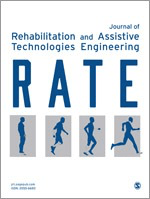
Journal of Rehabilitation and Assistive Technologies Engineering
Scope & Guideline
Innovating for Accessibility: Where Research Meets Real-World Impact
Introduction
Aims and Scopes
- Assistive Technologies Development:
Research and development of various assistive technologies, including prosthetics, orthoses, and robotic devices, that enhance mobility and daily functioning for individuals with disabilities. - User-Centered Design and Evaluation:
Emphasis on user-centered design processes to ensure that assistive devices and rehabilitation technologies meet the specific needs and preferences of end-users, including patients and healthcare providers. - Tele-Rehabilitation and Remote Monitoring:
Exploration of tele-rehabilitation techniques and remote monitoring systems that facilitate rehabilitation interventions and patient engagement from a distance, especially significant in the context of recent global health challenges. - Interdisciplinary Collaborations:
Encouragement of interdisciplinary approaches that combine insights from engineering, healthcare, psychology, and other fields to innovate and enhance rehabilitation practices. - Impact of Technology on Rehabilitation Outcomes:
Studies assessing the effectiveness of various technologies in improving rehabilitation outcomes, including physical function, quality of life, and social engagement.
Trending and Emerging
- Robotics in Rehabilitation:
A significant uptick in research related to robotics, including socially assistive robots and robotic prosthetics, showcases the potential of robotics to transform rehabilitation practices and improve patient outcomes. - Virtual Reality and Augmented Reality Applications:
Emerging studies focusing on virtual and augmented reality applications for rehabilitation highlight their effectiveness in engaging patients and enhancing therapeutic interventions. - Wearable Technologies and Sensors:
Increased interest in wearable technologies and sensor-based systems for monitoring rehabilitation progress and enhancing user experience indicates a trend towards more personalized and data-driven approaches. - Social Engagement and Mental Health:
Research focusing on the intersection of technology, social engagement, and mental health, particularly for vulnerable populations such as older adults and individuals with cognitive impairments, is becoming more prevalent. - Inclusive Design Practices:
There is a growing emphasis on inclusive design practices that consider diverse user needs, particularly for children and individuals with specific disabilities, ensuring that technologies are accessible and effective for all.
Declining or Waning
- Traditional Rehabilitation Techniques:
There seems to be a declining emphasis on traditional rehabilitation techniques in favor of more technologically advanced methods such as robotic-assisted therapies and virtual reality interventions. - Generalized Assistive Devices:
Research on generalized assistive devices that do not cater to specific user needs or conditions appears to be less frequent, as the focus shifts towards more customized and patient-centered solutions. - Non-Technology-Based Interventions:
There is a noticeable reduction in the publication of studies centered around non-technology-based rehabilitation interventions, indicating a broader acceptance and integration of technology in rehabilitation practices.
Similar Journals
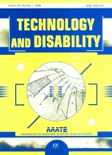
TECHNOLOGY AND DISABILITY
Bridging the Gap Between Technology and Accessibility.TECHNOLOGY AND DISABILITY, published by IOS PRESS, is a pivotal journal residing at the intersection of technology, rehabilitation, and health informatics. Since its inception in 1992, this journal has provided a vital platform for disseminating innovative research and findings that focus on the application of technology in addressing the needs of individuals with disabilities. With an ISSN of 1055-4181 and an E-ISSN of 1878-643X, it is recognized for its contributions to the field despite its current Q4 quartile ranking in Biomedical Engineering and Health Informatics, alongside a respectable Q3 ranking in Rehabilitation as of 2023. This ranking reflects a commitment to advancing knowledge in a vital area that impacts many lives. Although the journal is not open access, its comprehensive scope encompasses a range of disciplines making it an essential resource for researchers, professionals, and students looking to explore the ongoing advancements at the nexus of technology and disability. Located in Amsterdam, The Netherlands, TECHNOLOGY AND DISABILITY remains a key publication for those dedicated to improving lives through technology.

IEEE Open Journal of Engineering in Medicine and Biology
Transforming patient care with cutting-edge research.IEEE Open Journal of Engineering in Medicine and Biology is a premier Open Access journal published by the esteemed IEEE-INST ELECTRICAL ELECTRONICS ENGINEERS INC, dedicated to advancing the interdisciplinary fields of biomedical engineering and medicine. Since its inception in 2020, the journal has quickly established itself within the academic community, boasting a notable ranking of #49 out of 303 in the Biomedical Engineering category on Scopus and achieving an impressive 83rd percentile. With an objective of disseminating high-quality research and innovative developments that bridge engineering and medical sciences, the journal is committed to fostering collaboration among researchers, healthcare professionals, and policymakers. Operating with Open Access since 2020 allows for wider accessibility and dissemination of cutting-edge findings, promoting the exchange of knowledge vital for tackling contemporary challenges in health technology. As the journal continues to grow through to 2024, it remains a vital resource for anyone invested in the enhancement of medical technology and the betterment of patient care.

Brain Impairment
Unraveling the complexities of brain function.Brain Impairment, published by Cambridge University Press, is a pivotal academic journal dedicated to advancing the understanding of neurological conditions and cognitive processes. With its ISSN 1443-9646 and E-ISSN 1839-5252, this esteemed journal has been at the forefront of research in the fields of Behavioral Neuroscience, Cognitive Neuroscience, and Neuropsychology since its inception in 2004. Covering a broad scope, it addresses critical insights into brain function, impairments, and therapies, making it a valuable resource for researchers, clinicians, and students alike. Brain Impairment holds various rankings, including Q4 in Behavioral Neuroscience and Q2 in Speech and Hearing, reflecting its significance in the academic community. While the journal operates under print access, its rich content serves as an essential reference for professional development and scholarly discussion in the UK and beyond. Researchers and practitioners can rely on this journal to provide cutting-edge research and reviews that inform clinical practice and shape future studies in neurology and cognitive neuroscience.
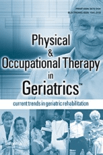
PHYSICAL & OCCUPATIONAL THERAPY IN GERIATRICS
Transforming lives with evidence-based geriatric practices.PHYSICAL & OCCUPATIONAL THERAPY IN GERIATRICS, published by Routledge Journals, Taylor & Francis Ltd, is a vital resource in the field of aging, dedicated to advancing knowledge and improving practices in physical and occupational therapy specifically tailored for the geriatric population. With an ISSN of 0270-3181 and E-ISSN of 1541-3152, this journal has been pivotal since its inception in 1981, providing a platform for scholars and practitioners to share innovative research and insights. Although currently listed in the Q4 quartile for Geriatrics and Gerontology and performing respectively in other categories, its ongoing commitment to research excellence and dissemination of evidence-based practices aligns with the increasing significance of rehabilitative care in an aging society. The journal contributes to understanding critical aspects of geriatric care, addressing the multifaceted challenges faced by health professionals in occupational and physical therapy. Researchers, professionals, and students in the field will find a wealth of knowledge that not only informs their practice but also fosters improved health outcomes for older adults. This journal is a crucial link between theory and practice, striving to illuminate the pathway for better rehabilitation paradigms in geriatric therapy.
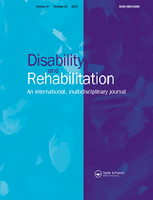
DISABILITY AND REHABILITATION
Empowering Lives Through Innovative Rehabilitation Research.Disability and Rehabilitation, a prestigious journal published by Taylor & Francis Ltd, plays a critical role in the field of rehabilitation science. Since its inception in 1978, this journal has been dedicated to presenting high-quality research focused on improving the lives of individuals with disabilities through innovative rehabilitation techniques and healthcare solutions. With an impressive Q1 ranking in the Rehabilitation category and a Scopus rank of #24 out of 161, the journal is recognized for its significant impact and rigorous scholarly contributions, boasting an 85th percentile performance among peers. Although it operates under a subscription model, the journal remains a vital resource for researchers, healthcare professionals, and students seeking the latest insights and developments in the realm of disability and rehabilitation. Covering a broad spectrum of topics, from clinical practices to theoretical advancements, Disability and Rehabilitation continues to shape the future of rehabilitation research and practice worldwide.
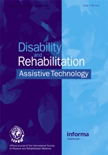
Disability and Rehabilitation-Assistive Technology
Pioneering Research for Empowered LivingDisability and Rehabilitation-Assistive Technology, published by Taylor & Francis Inc, is a leading journal dedicated to advancing research in the field of assistive technology, disability, and rehabilitation. With an ISSN of 1748-3107 and an E-ISSN of 1748-3115, this journal serves as a vital resource for researchers, clinicians, and professionals, providing high-quality, peer-reviewed articles that explore the latest innovations and methodologies in assistive technologies aimed at improving the quality of life for individuals with disabilities. The journal is recognized for its significant impact across multiple disciplines, achieving prestigious Q1 rankings in Rehabilitation and Speech and Hearing, and maintaining a solid position in Q2 across other relevant categories such as Biomedical Engineering and Orthopedics. As a collaborative platform for sharing knowledge and research findings, Disability and Rehabilitation-Assistive Technology plays a critical role in bridging the gap between technical advancements and practical applications in rehabilitation. Researchers and practitioners are encouraged to contribute and engage with the journal to enhance the collective understanding and efficacy of assistive technologies.

European Journal of Physical and Rehabilitation Medicine
Empowering Therapists: Unveiling Cutting-Edge Rehabilitation ResearchWelcome to the European Journal of Physical and Rehabilitation Medicine, the premier peer-reviewed journal focusing on advancements in the fields of physical therapy, sports therapy, and rehabilitation. Published by EDIZIONI MINERVA MEDICA, this journal has established itself as a leading resource since its inception in 2008, now enjoying an impressive Q1 ranking in these disciplines according to 2023 metrics. With an emphasis on rigorous research and innovative clinical practice, the journal facilitates the dissemination of high-quality, evidence-based studies, contributing to the enhancement of patient care and therapeutic strategies. As an Open Access platform since 2022, the journal widens its reach, enabling researchers, clinicians, and students across the globe to access valuable insights without barriers. Residing in Italy, the journal's focus transcends regional confines, engaging a vibrant international community aimed at improving rehabilitation outcomes. Join us in exploring the latest developments that shape the future of rehabilitation sciences.
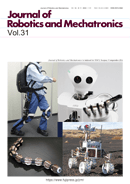
Journal of Robotics and Mechatronics
Bridging Ideas and Implementation in RoboticsJournal of Robotics and Mechatronics, published by FUJI TECHNOLOGY PRESS LTD, stands at the forefront of innovation in the fields of robotics and mechatronics. Since its inception in 1989, this Open Access journal has become a vital resource for researchers, professionals, and students interested in advances that merge technology with mechanical systems, offering critical insights into practical applications and theoretical developments. With a commendable impact factor reflected in its Q2 rankings in both Computer Science (miscellaneous) and Electrical and Electronic Engineering, the journal serves as a platform for disseminating high-quality research and fostering academic collaborations. The journal enjoys wide accessibility since transitioning to Open Access in 2007, allowing for a global audience to engage with groundbreaking findings relevant to both industry and academia. Based in Tokyo, Japan, the Journal of Robotics and Mechatronics aspires to bridge the gap between research and practical implementation, encouraging the exploration of novel concepts and the sharing of scientific knowledge.
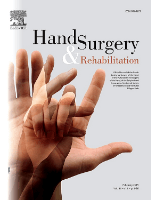
Hand Surgery & Rehabilitation
Empowering Excellence in Surgery and RehabilitationHand Surgery & Rehabilitation, published by ELSEVIER, is a vital resource for researchers, clinicians, and students engaged in the fields of orthopedics, rehabilitation, and surgery. With an ISSN of 2468-1229 and an E-ISSN of 2468-1210, this journal has established a prominent presence since its inception in 2016, with a convergence period extending until 2024. It holds a commendable ranking in the Q2 category within Rehabilitation and Surgery, as well as a Q3 classification in Orthopedics and Sports Medicine for the year 2023. With a Scopus Rank of #290/551 in Surgery and #86/161 in Rehabilitation, it exemplifies the ongoing pursuit of excellence in its domain. As an open access journal, it provides a platform for sharing significant research findings and advancements in hand surgery and rehabilitation, thereby contributing to the enhancement of clinical practice and patient outcomes. Engaging with this journal places professionals at the forefront of the latest developments in these critical areas of medicine, promoting interdisciplinary collaboration and fostering innovation.

Rehabilitation Process and Outcome
Delivering high-quality research for impactful recovery.Rehabilitation Process and Outcome, published by SAGE Publications Ltd, is a premier peer-reviewed journal dedicated to advancing the field of rehabilitation science. With an ISSN of 1179-5727 and an E-ISSN of 1179-5727, this open-access journal has been committed to disseminating high-quality research since its inception in 2008. The journal provides a vital platform for researchers, clinicians, and practitioners to share innovative studies, clinical practices, and advancements in rehabilitation methodologies. Its emphasis on open access ensures that findings are readily available to a global audience, promoting collaboration and knowledge exchange in the rehabilitation community. Rainier emphasis on practical outcomes supports the journal's mission to enhance patient care and recovery processes. Based in London, England, Rehabilitation Process and Outcome continues to foster significant discourse in the rehabilitation sector, making it an essential resource for those involved in enhancing recovery strategies and overall health outcomes.